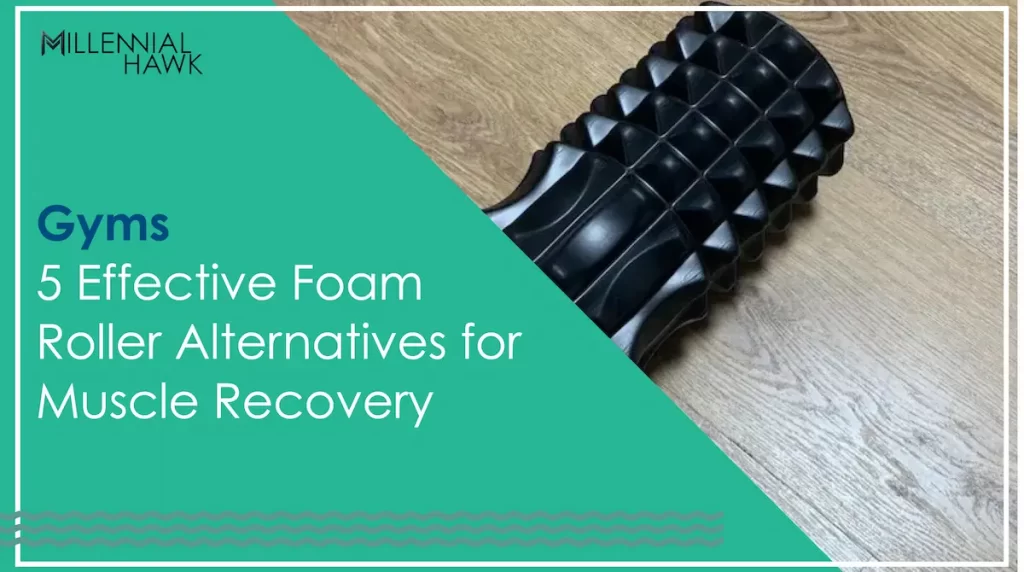
Foam rollers have become increasingly popular in recent years as people turn to them for relief from sore muscles and tension. However, traditional foam rollers may not be suitable for everyone due to their firmness or size, which can make them uncomfortable or difficult to use. That’s where foam roller alternatives come in – these products offer similar benefits to traditional foam rollers but with different features that may better suit your needs.
When considering foam roller alternatives, it’s important to pay attention to the type of material used. Some alternatives may be made from cork, wood, or even PVC, each with its own benefits and drawbacks. Size and shape are also crucial factors to consider, as some alternatives may be smaller or more portable than traditional foam rollers, making them easier to use on the go or in smaller spaces.
Foam rollers are a popular tool for relieving muscle tension and soreness, but they’re not for everyone. Some people find them uncomfortable or too intense, while others simply prefer a different type of self-massage. That’s why we’ve put together a list of the best foam roller alternatives on the market. Whether you’re looking for something softer, more targeted, or more portable, we’ve got you covered. Check out our top picks below.
Millennial Hawk is a reader-supported platform. Purchases made through our links may earn us an affiliate commission at no extra cost to you.
1. Hypervolt Go 2
BEST foam roller substitute FOR MUSCLE RECOVERY
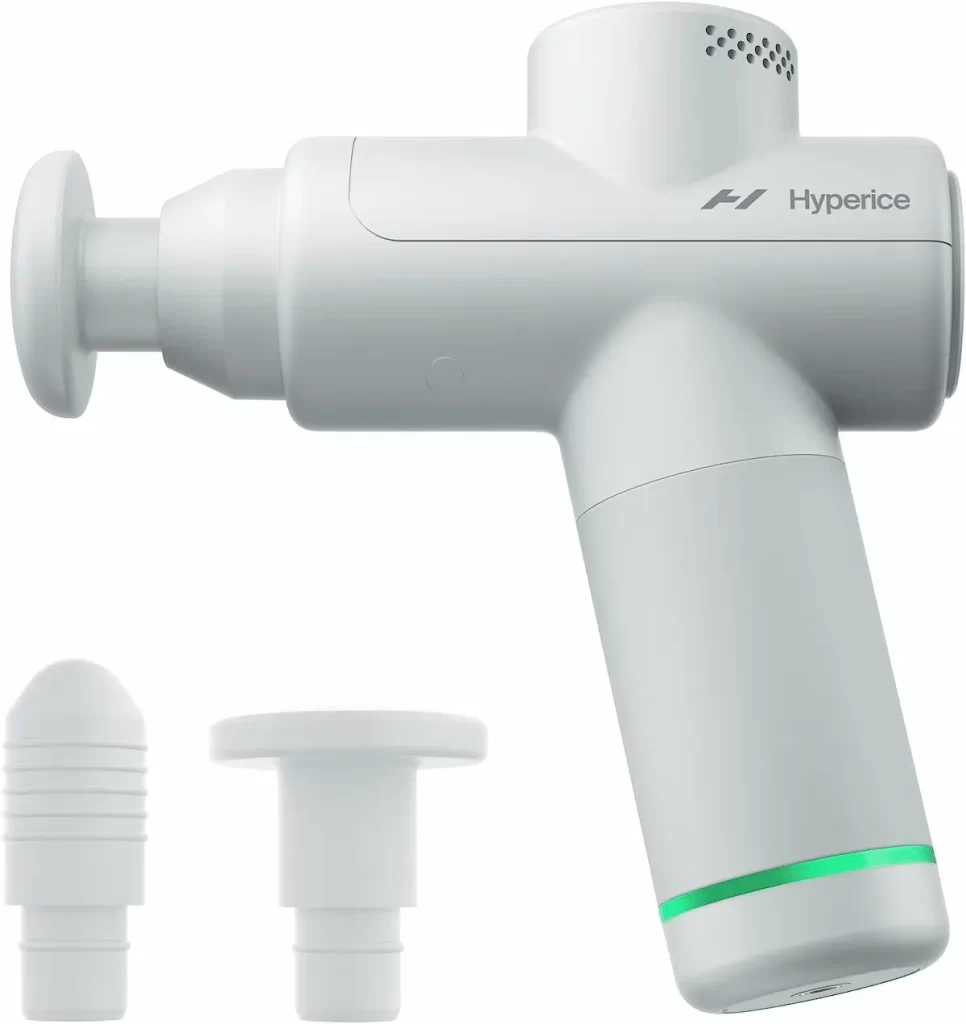
| Pros |
|---|
| The Hypervolt Go 2 is compact and lightweight, making it easy to carry around in your bag. |
| The QuietGlide technology ensures that the device is quiet, so you don’t have to worry about disturbing others around you. |
| With a powerful brushless high-torque 40w motor, the Hypervolt Go 2 delivers all the power you need to keep going. |
| Cons |
|---|
| The Hypervolt Go 2 is only compatible with USB A – USB C, which may be inconvenient for some users. |
Hypervolt Go 2 is one of the top foam roller substitutes definitely worth considering if you’re looking for a compact and lightweight handheld percussion massage gun. We found that the Hypervolt Go 2 was incredibly easy to use and provided effective relief for sore muscles and stiffness. The device is TSA-approved and travel-friendly, making it a great option for those who are always on the go.
The three-speed settings allow you to customize your massage experience, and the interchangeable heads make it easy to target different muscle groups. The device also comes with a 3-hour battery life, so you don’t have to worry about running out of power mid-massage.
Overall, if you’re looking for a high-quality handheld percussion massage gun that’s both powerful and portable, the Hypervolt Go 2 is definitely worth considering.
2. Vibrating Peanut Massage Ball
BEST foam roller substitute FOR RUNNERS
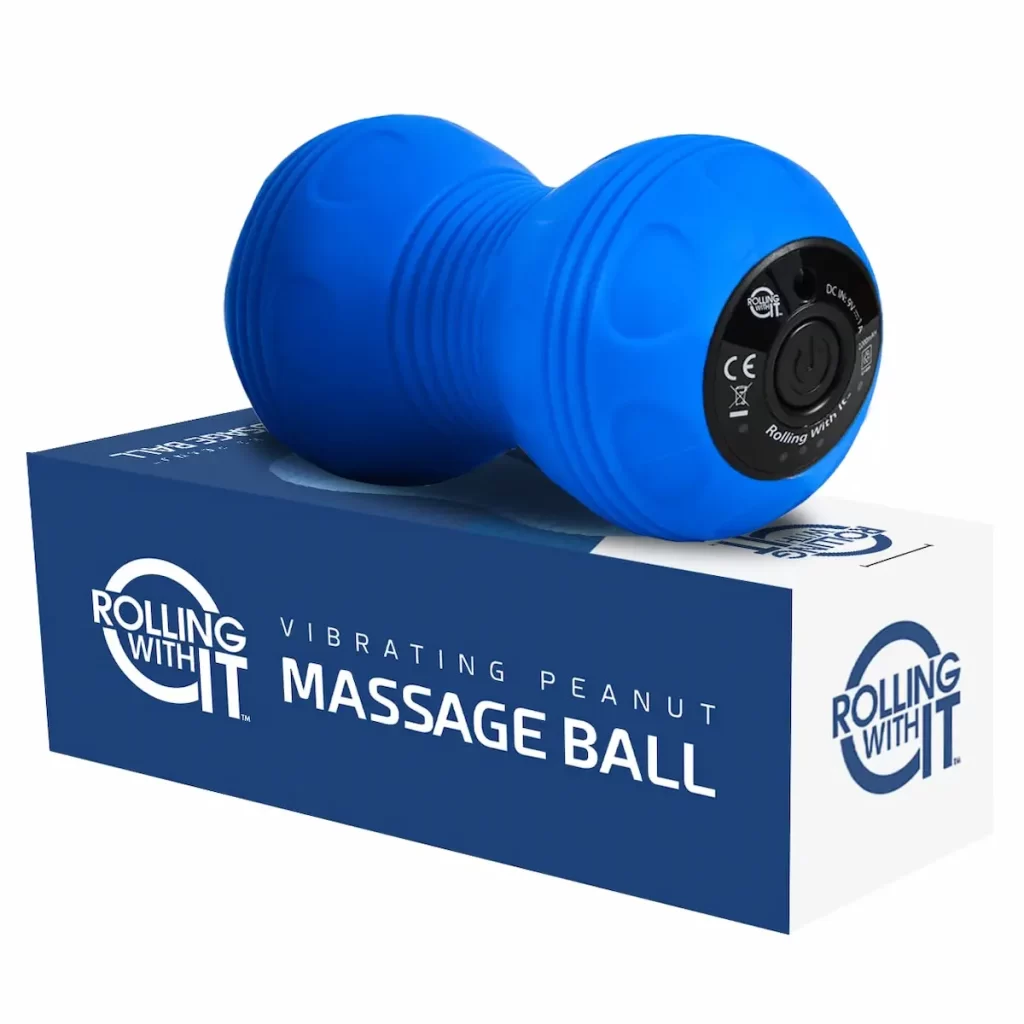
| Pros |
|---|
| The high-intensity vibration of the massage ball roller is effective in melting away nagging muscle pain or tension. |
| The versatile peanut therapy ball is perfect for anyone suffering from chronic pain, and it covers all your needs. |
| The smooth comfort-grip silicone surface with hours of operation makes it easy to take your battery-operated Vibration Peanut Roller on the road, to the office, or even to the couch while you catch up on your favorite shows. |
| Cons |
|---|
| The price point is higher than some other foam roller alternatives on the market. |
| The device could be a bit noisy for some users. |
If you are looking for a high-quality, versatile foam roller alternative for running, the Rolling With It Vibrating Peanut Massage Ball is definitely worth considering. We have found that the Rolling With It Vibrating Peanut Massage Ball is a great tool to help relieve pain and tension in sore muscles. The peanut therapy ball is easy to use and versatile, allowing you to target any problem area, large or small.
The device is lightweight and waterproof, making it easy to take with you on the go. The four-speed motor is powerful and effective in providing localized deep-tissue massage to your fascia, muscles, ligaments, or tendons.
3. Therabody Wave Solo
BEST foam roller substitute FOR BACK PAIN RELIEF
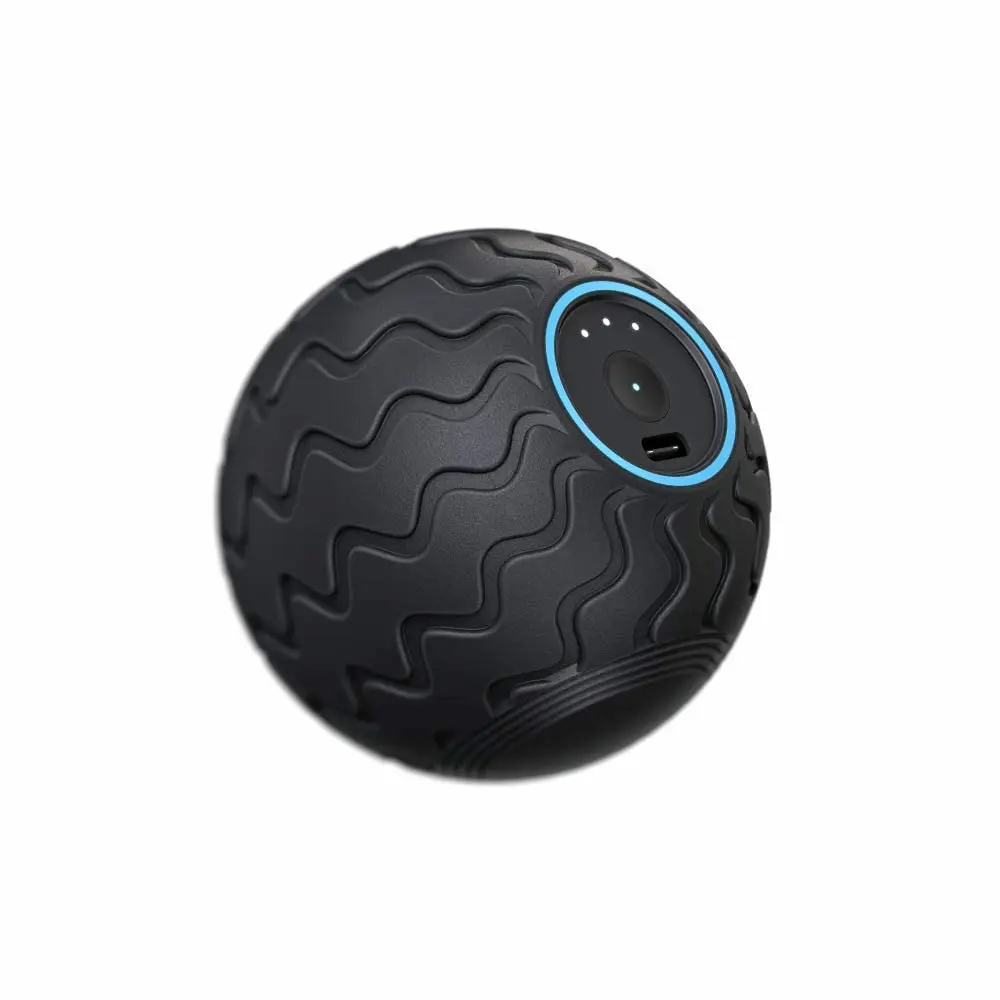
| Pros |
|---|
| The Wave Solo has a compact design that allows it to target hard-to-reach areas like feet and hip flexors with pinpointed relief. |
| With QuietRoll Technology and three powerful vibration frequencies, the Wave Solo can help release soreness, reduce tension, and increase range of motion. |
| With QuietRoll Technology and three powerful vibration frequencies, the Wave Solo can help release soreness, reduce tension, and increase the range of motion. |
| Cons |
|---|
| The Wave Solo’s internal battery life is only 120 minutes, which may not be enough for extended use. |
| The Wave Solo may not be as versatile as other foam roller alternatives on the market. |
If you’re looking for a portable and customizable foam roller alternative for recovery, the Therabody Wave Solo might be the perfect fit for you. We’ve used the Therabody Wave Solo and found it to be a great option for those who need targeted relief in hard-to-reach areas. The compact design makes it easy to take on the go, and the customizable vibration frequencies allow for a personalized experience. The wave texture and silicone grooves also provide a unique experience that other foam roller alternatives don’t offer.
However, the Wave Solo’s battery life may not be enough for extended use, and the higher price point may not be suitable for everyone. Additionally, the Wave Solo may not be as versatile as other foam roller alternatives on the market, so it’s important to consider your specific needs before making a purchase.
Overall, we recommend the Therabody Wave Solo for those who need targeted relief and a customizable experience. If you’re looking for a portable and innovative foam roller alternative, the Wave Solo might be the perfect fit for you.
4. Tiger Tail The Spinnie Roller
BEST foam roller substitute FOR ATHLETIC TRAINING
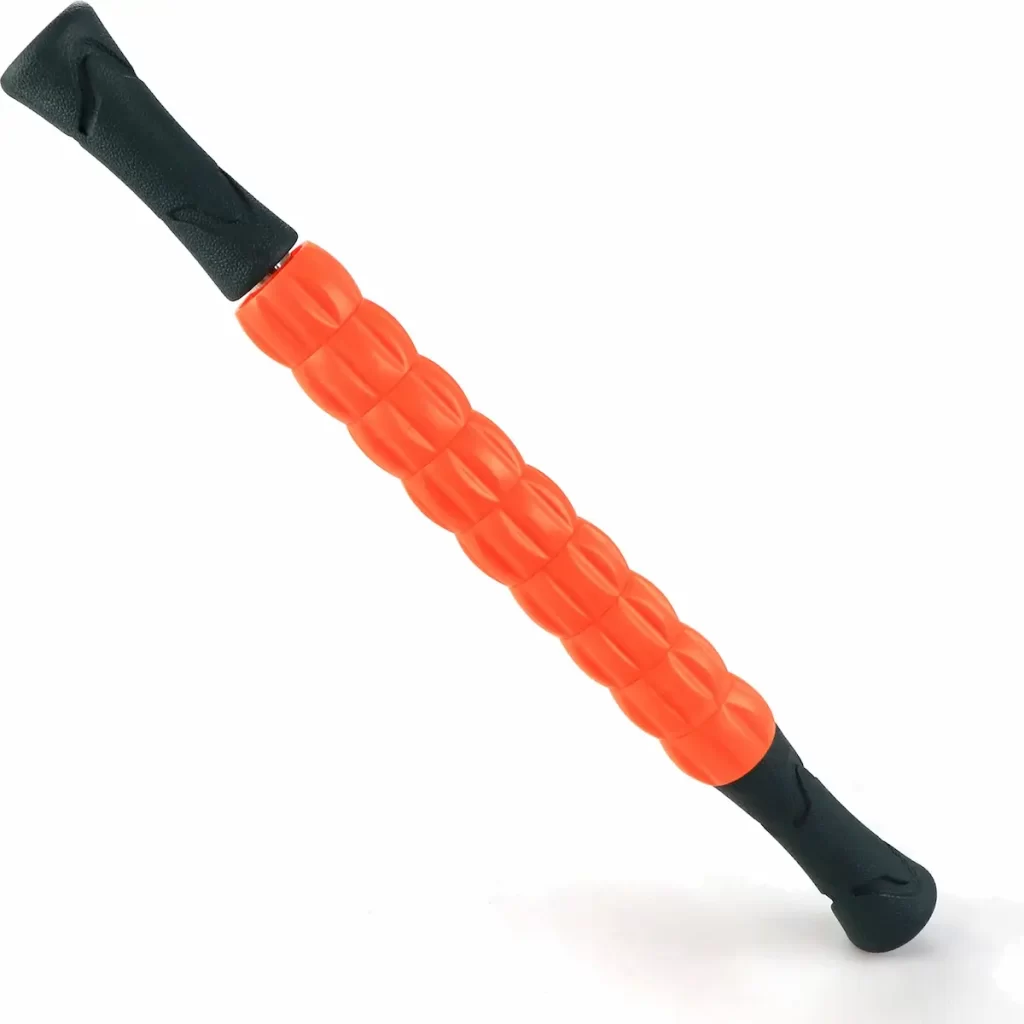
| Pros |
|---|
| The firm design does not bend, allowing you to target pressure exactly where you want it. |
| It saves your thumbs, fingers, and hands from fatigue. |
| It is easy to clean with gel/spray. |
| Cons |
|---|
| The device is very rigid, making it difficult to reach muscle areas in the back. |
| It may not be suitable for individuals with knee problems. |
If you’re looking for a muscle-friendly massage tool that can provide therapy-clinic-quality myofascial release, then Tiger Tail The Spinnie Roller is a great alternative to foam rollers. It is portable and easy to pack, so you can take it with you anywhere.
Tiger Tail The Spinnie Roller is an excellent tool for relieving minor muscle knots, aches, and soreness. It can quickly massage any part of the body without getting down on the ground. Additionally, it can improve flexibility and range of motion by stretching out the muscles and fascia.
The Spinnie Roller is incredibly sturdy and well-made, so you can feel confident massaging strongly without fear of breaking it. The little rollers move freely, and the handles are comfortable. Although it may not be pleasant to use, it works well on getting knots out of muscles, particularly for IT band release.
5. T Spheres Pure Relief Massage Ball Set
BEST FOAM ROLLER ALTERNATIVE FOR DEEP TISSUE MASSAGE
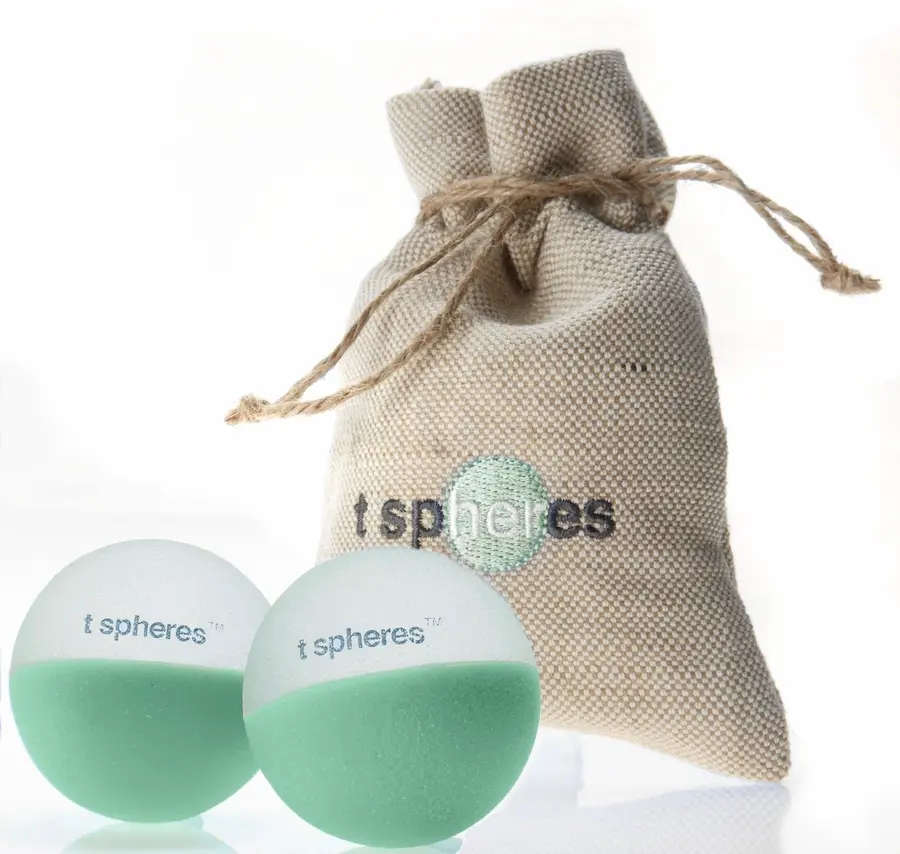
| Pros |
|---|
| The patented textured massage balls are designed by a massage therapist for natural mind and body relaxation. |
| The small size of the balls makes them perfect for neck and foot massage or acupressure. |
| The T Spheres set can be heated or cooled, making them ideal for injury prevention and muscle pain relief during yoga, dance, fitness, or sports. |
| Cons |
|---|
| The T Spheres set does not come with aromatherapy infusion, but you can purchase T Spheres essential oils separately. |
| Some users have reported that the balls have a strong odor, which can be unpleasant. |
If you’re looking for a versatile and portable massage ball set, the T Spheres Pure Relief Massage Ball Set might be a great option for you. We’ve found that the T Spheres Pure Relief Massage Ball Set is a great travel accessory for self-massage and stress relief on the go, at work, or even for a spa day at home. The small size of the balls also makes them perfect for targeting specific areas of the body, such as the neck or feet.
The patented textured design of the balls provides a unique massage experience that can help release tension and promote relaxation. We particularly appreciate that the T Spheres set can be heated or cooled, which makes them an excellent tool for injury prevention and muscle pain relief during physical activities. While the T Spheres set does not come with aromatherapy infusion, you can purchase T Spheres essential oils separately to enhance your massage experience. However, some users have reported that the balls have a strong odor, which can be unpleasant.
Overall, we recommend the T Spheres Pure Relief Massage Ball Set for anyone looking for a versatile and portable massage tool that can help promote relaxation and relieve muscle tension.
how to choose foam roller alternatives for a home gym?
When looking for an alternative to foam rollers for your home gym, there are a few things to keep in mind to ensure you choose the best product for your needs. Here are some features to consider:
- Material: First and foremost, consider the material of the roller. The most common alternatives to foam rollers are made of firm plastic, rubber, or cork. Each material has its own benefits, so choose one that suits your preferences.
- Size and Shape: The size and shape of the roller are also important factors to consider. Some alternatives are smaller and more portable, while others are larger and better suited for specific body parts. Choose a size and shape that will work best for your needs.
- Texture: The texture of the roller can also make a big difference in its effectiveness. Some alternatives have ridges or bumps that can provide a deeper massage, while others have a smoother surface. Consider what type of texture will work best for your body and preferences.
- Durability: You want to invest in a roller that will last you a long time. Look for alternatives that are made with high-quality materials and are built to withstand frequent use.
- Price: Finally, consider the price of the alternative roller. While some options may be more expensive than others, remember that investing in a high-quality product can save you money in the long run by reducing the need for replacements.
How To Roll Out Sore Muscles Without a Roller
The following 9 steps shows how to roll out sore muscles without a foam roller.
- Mobilize with kettlebell
- Spend some time with a Barbell
- Use a dough roller or pizza roller
- Use the medicine ball
- Get a massage ball
- Ask your friend, colleague, or spouse for a massage
- Use a double lacrosse ball, duoball, or peanut ball
- Find a small 1-2 lbs dumbbell
- Use a PVS pipe or a vacuum pipe
1. Mobilize with kettlebell
Mobilizing with a kettlebell offers an alternative to foam rolling. You can use a kettlebell in two ways for self-myofascial release: by placing it under the targeted muscle or positioning it on the muscle you want to mobilize.
When using a kettlebell on your legs, employ the contract-relax technique, involving a 5-second peak squeeze followed by 10 seconds of relaxation while the kettlebell rests on the muscle. Repeat this cycle 5 times and gradually reposition the kettlebell along the same muscle. For better stability, place the kettlebell with the handle on the floor and focus on contract relax and simple flexion and extension to target muscle tension effectively.
2. Spend some time with a Barbell
Using a barbell as an alternative to foam rolling offers effective relief for muscle tension. You can use it in two ways: place the sleeve of the barbell on your muscles or lay down on the barbell to target areas like glutes, quads, or hip flexors.
For more pressure, choose a heavier weight and lean forward or press on the barbell. Implement the contract-relax method for optimal results and ensure a comfortable and stable position when sitting or lying down on the barbell.
3. Use a dough roller or pizza roller
Utilizing a dough roller or pizza roller as an alternative to a foam roller is a practical option. These kitchen tools are typically made of hard plastic or wood, with a smooth finish that’s gentle on the skin. They are sturdy and can handle pressure effectively.
Due to their smaller diameter compared to regular foam rollers, they provide more localized pressure on the muscles. To use a dough roller effectively, place a towel or yoga mat underneath, clean it to prevent staining clothes, and wear snug-fitting attire to avoid material getting caught during rolling. Instead of traditional rolling, focus on targeted pressure points with the dough roller.
4. Use the medicine ball
Leveling up your self-myofascial release game with a medicine ball is an effective approach, especially for targeting specific muscle groups like quads, glutes, and IT bands. These heavy rubber balls provide localized pressure, similar to having an elbow applied to tight muscles. While the pressure can be intense, it offers a thorough release of tension.
To maximize your medicine ball rolling experience, ensure a wide leg stance for stability, use your arms to control the pressure, and take a moment to find balance and stability as the ball can roll in various directions. Focus on spending extra time in specific areas and consider incorporating contract-relax and flex-extend techniques for optimal results.
5. Get a massage ball
A massage ball is a versatile and convenient alternative to a foam roller that you can easily carry with you. These balls come in various sizes and offer more than just massage benefits. For example, the T spheres massage ball available on Amazon can be heated or cooled to cater to your specific needs.
Heating it up allows for deeper muscle penetration, while cooling it down can provide relief for areas like your neck, shoulders, or temples. Massage balls are excellent for targeting muscles that a large foam roller may not reach effectively, making them perfect for localized pressure and contract-relax techniques.
6. Ask your friend, colleague, or spouse for a massage
If you’ve experienced Thai or Shiatsu massages, you may have observed therapists using their feet to apply pressure during the massage. Walking on someone’s body is a common technique, and it can be used to target specific muscle groups effectively. This practice is also part of the routines of Chinese weightlifters and Thai kickboxers after intense training sessions. You don’t need special certification to apply gentle pressure to a friend’s muscles or vice versa, but it’s important to be cautious and considerate.
7. Use a double lacrosse ball, duoball, or peanut ball
Consider using a double lacrosse ball, duoball, or “peanut” ball as an effective alternative to foam rolling. While initially designed for spinal rolling due to its unique peanut shape, this ball can also mobilize various muscles in the body. You can target areas such as the calves, quads, hamstrings, hip flexors, lower back, upper back, neck, and shoulders due to its compact size.
When using the peanut ball, be prepared for greater pressure compared to a foam roller. Avoid rolling back and forth on your back; instead, focus on staying on one spot for about 20-30 seconds before moving up incrementally. Start at the lumbar area and work your way up towards the neck for back rolling. For leg rolling, back-and-forth motion is suitable, but concentrate on specific problematic areas and utilize the contract-relax and flex-extend techniques for optimal results. When targeting shoulders and chest, lean against a wall and let your body rest on the ball, gradually shifting your weight to address different areas.
8. Find a small 1-2 lbs dumbbell
In crowded gyms, finding equipment like foam rollers can be challenging during peak times. To address this issue, you can get creative and use a small 1-2 lbs dumbbell as an alternative to a foam roller. These dumbbells are typically coated with rubber and are slightly wider than your fist, making them suitable for specific muscle mobilization.
Small dumbbells work well for targeting muscles such as the hamstrings, forearms, and even hip flexors if you’re up for it. Hamstring mobilization can be particularly tricky because applying sufficient pressure for effective results can be challenging.
9. Use a PVS pipe or a vacuum pipe
When you find yourself without a foam roller but have a spare PVC pipe, you can use it effectively for self-myofascial release. PVC pipes, like dough rollers, have a small diameter, allowing for localized pressure and better access to your muscles.
Depending on the length of the PVC pipe, you can focus on areas such as your glutes, quads, calves, and arms. However, due to its flat shape, it’s not suitable for use on your lower or upper back. Alternatively, if you have an old vacuum that’s not in use and lacks access to a foam roller, you can repurpose it as a rolling tool. Opt for the stiffer, solid type of vacuum pipe.
How can I make a homemade foam roller?
If you don’t want to spend money on a foam roller, you can make your own at home. One option is to use a PVC pipe and wrap it in foam or a towel. Another option is to use a pool noodle or a rolling pin. These homemade foam roller alternatives may not be as durable as a commercial foam roller, but they can be effective for occasional use.
What are the benefits of using a foam roller substitute?
Foam roller substitutes can help to improve flexibility, reduce muscle soreness, and increase blood flow to the muscles. They can also help to break up adhesions and knots in the muscles, which can improve the range of motion and reduce the risk of injury.
What is the best substitute for a foam roller?
The best substitute for a foam roller depends on your individual needs and preferences. Massage balls and sticks are good options for targeting specific areas of the body, while percussion massage guns can provide a deeper massage. If you prefer a softer touch, a pool noodle or a rolled-up towel can be effective substitutes.
Can a towel be used as a substitute for a foam roller?
Yes, a towel can be used as a substitute for a foam roller. Simply roll up the towel and use it to massage the muscles. A towel may not provide as much pressure as a foam roller, but it can still be effective for reducing muscle soreness and improving flexibility.
What are some exercises I can do without a foam roller substitute?
Foam roller substitutes are not necessary for all exercises. Some exercises that can be done without a foam roller substitute include stretching, yoga, and bodyweight exercises. These exercises can help to improve flexibility and strength without the need for any equipment.
How Often Should You Foam Roll?
As a simple guideline, aim to foam roll daily for 10-15 minutes as part of your post-workout routine or wind-down in the evening. However, the frequency can vary based on your specific goals and needs, so consider your current issues and what you want to achieve when deciding how often to foam roll.
Why does foam rolling sometimes hurt?
Foam rolling can hurt when you apply too much pressure and overtreat yourself, or when you position the roller on the trigger point. A trigger point is a localized sensitive area in the muscle tissue that’s tight, sore, overused, and painful to compress.
